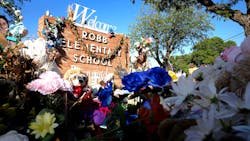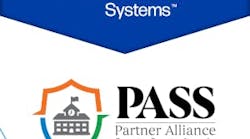DALLAS — Most Texas public schools reviewed this fall passed random inspections meant to detect whether an intruder could gain access to campuses, but more than a quarter of them still need to make improvements.
Nearly 3,000 campuses underwent the surprise audits and at about 95% of them, inspectors weren’t able to get unauthorized access, according to a new report from the Texas School Safety Center.
At about 130 campuses, inspectors were able to gain unauthorized access within five minutes. They could do so within two minutes at 75 schools, the report noted.
About 28% of all schools audited, or more than 800, still needed corrective actions, the report found.
Gov. Greg Abbott ordered the random inspections in the wake of the deadly Uvalde mass shooting in May where a heavily armed gunman gained access to Robb Elementary School, killing 19 children and two teachers.
“Your team should begin conducting in-person, unannounced, random intruder detection audits on school districts,” Abbott wrote in a June letter to Kathy Martinez-Prather, director of the Texas School Safety Center. “Staff should approach campuses to find weak points and how quickly they can penetrate buildings without being stopped.”
The majority of the time that inspectors did gain access to school campuses was through secondary unlocked doors, not through the main office – highlighting a common challenge for school officials.
After the Uvalde massacre, officials falsely blamed a Robb Elementary teacher for propping a door open moments before the gunman entered the school. Ultimately it was revealed that the teacher slammed the door shut, but it did not automatically lock.
The audits found more than 85% of exterior doors were locked upon inspection. In some cases, items were nearby that could easily be used to prop them open, the report noted. Most districts audited do proactively conduct exterior door sweeps to check for unlocked or broken doors regularly.
The preliminary report comes as lawmakers convene in Austin for the legislative session with a budget surplus that educators hope could mean allocating more funding for school safety as it’s top of mind for many.
Dallas schools Superintendent Stephanie Elizalde wants significantly more funding for a variety of safety-related initiatives.
Schools currently get roughly $10 per student for safety needs, but Dallas ISD wants that bumped up to at least $200. Elizalde said that would help the district “harden” schools by adding cameras or security vestibules at the front door of school buildings and fund mental health supports for students, such as hiring additional counselors.
It’s hard to pinpoint what other improvements districts or schools need the most though. The school safety center, located at Texas State University, set a goal to audit 100% of districts and 75% of campuses by the end of the school year. Only about a third of all campuses have been inspected so far.
Texas is home to more than 1,000 public school districts and charters. Texas schools encompass more than 8,000 campuses and 672 million square feet, according to the National Council on School Facilities.
Individual school districts aren’t sharing much information about the audit findings or school safety needs. Many have discussed the audits in closed-door, private meetings citing safety concerns.
The Dallas Morning News has requested information, including what districts and how many of their campuses have been inspected, from Dallas ISD and the Texas School Safety Center but has not received such information.
The center’s report released this week does not include information about what type of corrective actions are needed on campuses or the current status of those efforts. The report did note that about 51% of corrective actions have been verified and addressed.
Districts have 45 days after it is notified by the center to address corrective actions. Ultimately, districts must provide documentation of the actions taken to the Texas Education Agency and must also notify the public of the plan to address the corrective actions during a regular school board meeting.
———
The DMN Education Lab is a community-funded journalism initiative, with support from Bobby and Lottye Lyle, Communities Foundation of Texas, The Dallas Foundation, Dallas Regional Chamber, Deedie Rose, Garrett and Cecilia Boone, The Meadows Foundation, The Murrell Foundation, Solutions Journalism Network, Southern Methodist University, Sydney Smith Hicks and the University of Texas at Dallas. The Dallas Morning News retains full editorial control of the Education Lab’s journalism.)
———
©2023 The Dallas Morning News. Visit dallasnews.com. Distributed by Tribune Content Agency, LLC.



